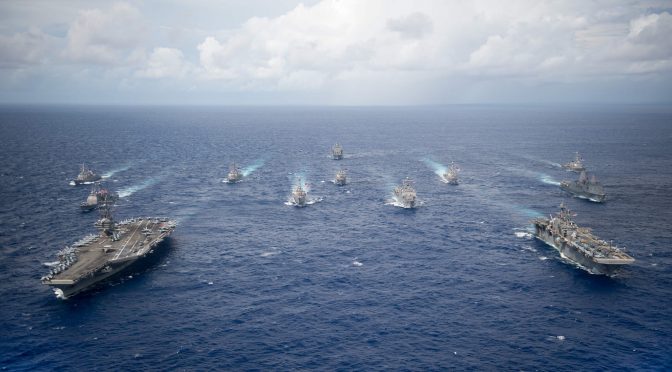By Dmitry Filipoff
CIMSEC is interested in publishing informed analysis on several trending issues outlined below. There is no deadline for submissions on the topics described. Draft articles, writing ideas, and questions should be sent to Nextwar@cimsec.org.
Navy Overhauls Enlisted Career Management
Navy leadership announced that it will end the use of the rating system in favor of a system of addressing rank similar to what is practiced in the other services. Statements from Navy spokesmen describe the intent of the change is “to develop a new approach to enlisted ratings that would provide greater detailing flexibility, training and credentialing opportunities, and ultimately translate Navy occupations more clearly to the American public.” Read NAVADMIN 218/16 here.
U.S.-Philippine Alliance
Philippine President Rodrigo Duterte made public statements that challenge the U.S.-Philippine alliance and mil-to-mil relationship. President Duterte said “I would serve notice to you now that this will be the last military exercise,” and “Jointly, Philippines-US, the last one.” The State Department responded by stating “The bottom line is that we have significant security commitments with the Philippines,” and that “We’re committed to meeting those commitments and to furthering this relationship.”
New U.S. Marine Corps Operating Concept
The Marine Corps recently released a new operating concept to guide its development and remain relevant in future threat environments. The concept describes its central problem as “The Marine Corps is not organized, trained, and equipped to meet the demands of a future operating environment characterized by complex terrain, technology proliferation, information warfare, the need to shield and exploit signatures, and an increasingly non-permissive maritime domain.”
A summary of the concept states “The 21st century MAGTF conducts maneuver warfare in the physical and cognitive dimensions of conflict to generate and exploit psychological, technological, temporal, and spatial advantages over the adversary. The 21st century MAGTF executes maneuver warfare through a combined arms approach that embraces Information Warfare as indispensable for achieving complementary effects across five domains – air, land, sea, space, and cyberspace. The 21st century MAGTF avoids linear, sequential, and phased approaches to operations and blends maneuver warfare and combined arms to generate the combat power needed for simultaneity of action in its full range of missions. The 21st century MAGTF operates and fights at sea, from the sea, and ashore as an integrated part of the Naval force and the larger Combined/Joint force.” Read the concept here.
Dmitry Filipoff is CIMSEC’s Director of Online Content. Contact him at Nextwar@cimsec.org.
Featured Image: PANAMA CANAL (August 13, 2012) Sailors aboard the Ticonderoga-class guided-missile cruiser USS Cape St. George (CG 71) watch as the ship travels through the Centennial Bridge during its transit through the Panama Canal on its return to the Pacific Ocean. (U.S. Navy photo by Mass Communication Specialist 3rd Class Christopher S. Johnson/Released).




